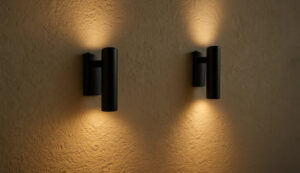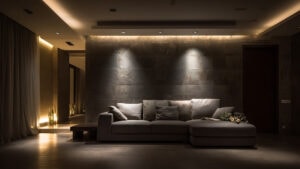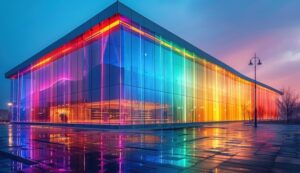Museums play a big role in showcasing our collective heritage. But if not displayed under proper lighting, these cultural relics may not receive the attention they truly deserve.
Proper lighting in a museum space enhances the colors, textures, and intricacies of the displayed elements. It creates an ambiance that improves the overall experience and preserves the integrity of the artifacts.
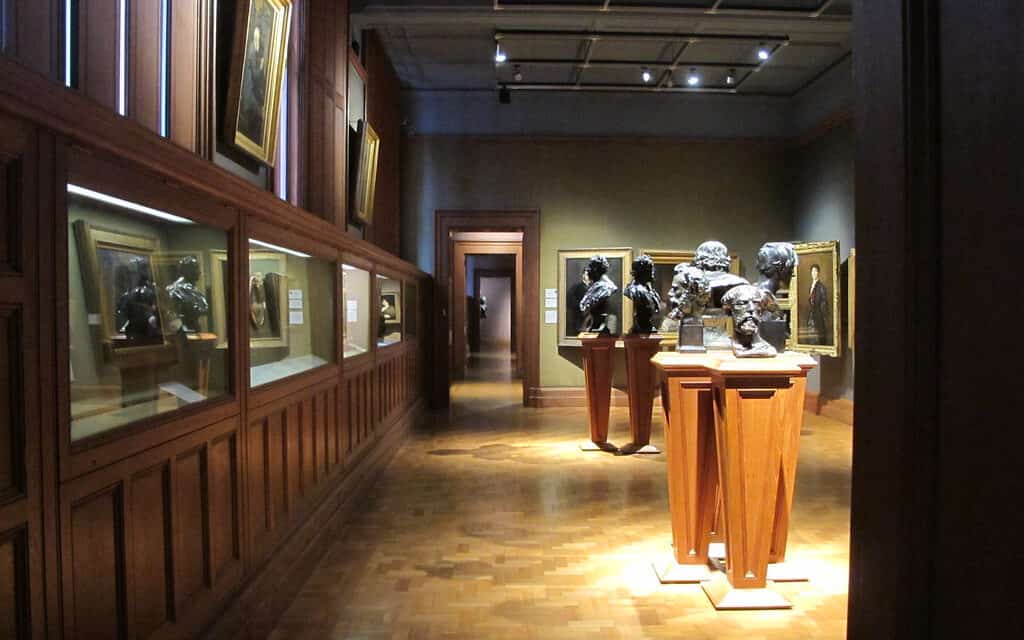
In this article, we will talk about how to light up a museum, create an optimal lighting design and choose the lighting that best suits the purpose. Let’s get into it.
Importance of Lighting Exhibition Spaces and Museums
The importance of lighting up a museum can be judged by the fact that there is a specialized field of study known as “museum lighting design,” which focuses on the art of illuminating museum spaces, protecting artifacts, and creating an optimal light environment for exhibition.
- First, proper lighting design will enable the audience to see every tiny detail of the showcased artifacts, including color, texture, and shapes. Whether the artifacts are 2D paintings or 3D sculptures, good lighting will emphasize every detail.
- Second, it will improve the overall visibility of the surroundings so people can navigate easily in the exhibition space. Proper lighting at the entrance of the building also develops a sense of safety and excitement in the visitors.
- Third, careful selection of the types of lights and lighting fixtures can help preserve the displayed items. It is important to understand that the UV rays and heat emitting from lights can damage delicate artifacts.
Now that we understand the importance of lighting in museum spaces, let’s learn what type so lights are best for this purpose.
What is the Best Lighting Type for a Museum?
Many types of lighting are used in museum and exhibition spaces. The most popular are LEDs, fluorescent lights, halogen lamps, incandescent lights, and HID.
Incandescent Lights
Incandescent lights are used for creating ambient lighting in museums. The downside, however, is they produce a lot of heat and are inefficient. They have a short lifespan and limited variation in colors.
Fluorescent Lamps
A fluorescent lamp is energy efficient and cost-effective, but it flickers a lot and can cause headaches and eye discomfort. Research indicates it is the low-frequency flicker, high amount of blue light, and high brightness that causes adverse effects.
HID Bulbs
HIDs (High-Intensity discharge) lights have a shorter life and only 30% efficiency. The biggest issue is they emit a significant amount of UV rays that can damage the artifacts.
LED Lights
LED lights are best for museums because of their cost-effectiveness, high efficiency, color variations, designs, and much more.

Key Benefits of Using LED Lighting in Museums
Let’s learn how LEDs surpass traditional lighting types.
Energy Efficiency
LEDs are 75-80% more efficient than traditional lighting. This means LED lights consume much less energy to produce the same amount of light as conventional lights. Despite the higher initial investment cost, the significant reduction in electricity bills over time compensates for it when using LED lights.
Long Lifespan
LEDs serve for the longest time because of their high efficiency. Most LEDs will last 50,000-100,000 hours which is 25 times longer than traditional lights. With LEDs, you will save the time and effort that goes into maintaining and replacing worn-out fixtures.
Versatility in Design
LED lights offer incredible versatility in colors, designs, and sizes. They are available in a wide range of colors, from warm white to cool white, and even RGB options for dynamic color-changing effects. LED lights can be dimmed to adjust brightness levels, allowing for customizable lighting ambiances. Their compact sizes make them suitable for various applications, while their flexible designs enable them to be shaped or bent to fit unique spaces and designs.
Enhanced Color Rendering
Color rendering index (CRI) means how accurate and natural the color of an object looks under a light source. This is one of the most essential factors in choosing lighting for projects like museums where the accuracy of colors is of paramount importance.
CRI is measured within the range of 0-100. A perfect score of 100 means the color under a light source looks exactly how it’d look in natural sunlight. LEDs have a CRI between 85-100, allowing you to choose from a variety of options to better fit your needs.
LEDs with high CRI will render the true colors of artifacts and objects displayed, allowing visitors to truly connect with the item.
Reduced Heat Emission and UV Radiation
One big downside of using traditional lights is they emit significant amounts of heat and UV radiation that can damage the paintings and surfaces of delicate objects.
This phenomenon is called “Photochemical Degradation.” Light, particularly ultraviolet (UV) radiation, can initiate chemical reactions within the materials used in artworks and artifacts, leading to irreversible changes over time. This process can result in fading, discoloration, and degradation of the pigments, dyes, or organic materials present in the objects.
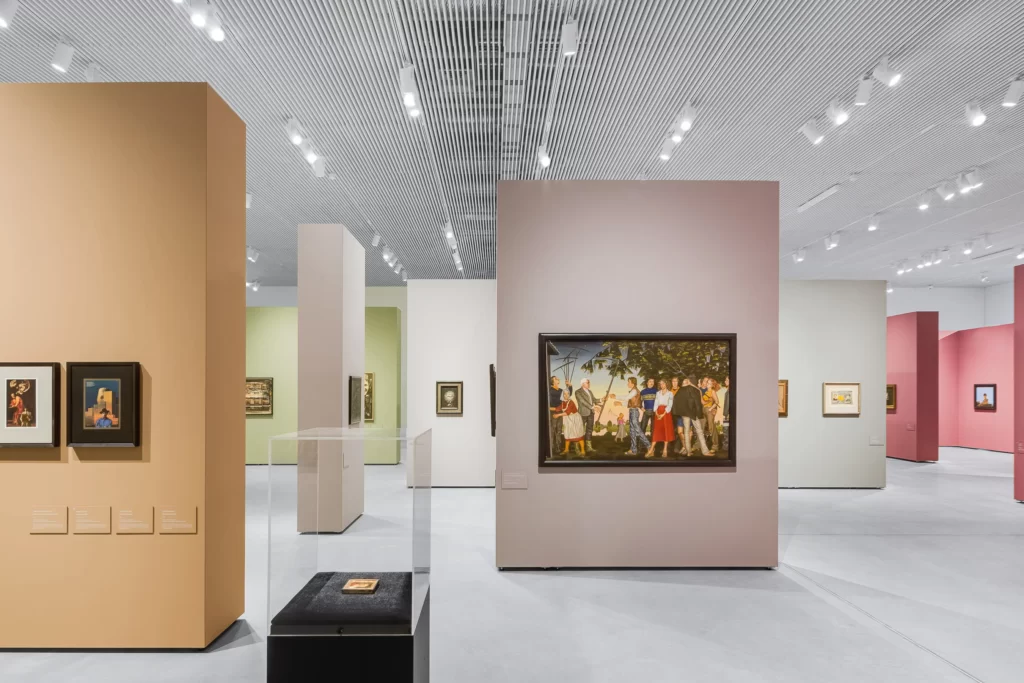
Compared to traditional lights, LEDs emit almost negligible UV rays, which is another reason why LEDs are preferred in museums and galleries.
LEDs emit radiation in the form of visible light. But these radiations do not fall within the range of x-rays or gamma rays. Hence, LED radiations are not harmful.
In addition, LEDs emit very little heat.
To mitigate the risk of photodegradation, museums, and galleries implement conservation measures such as using UV filters or window films, controlling the intensity and duration of light exposure through lighting systems, and periodically rotating and resting light-sensitive objects to minimize cumulative damage. The best way is to utilize LED lighting.
Cost Savings
The high efficiency of LEDs translates into reduced electricity consumption, resulting in lower energy bills. Furthermore, LED lights have a longer lifespan than traditional ones, reducing the frequency of replacements and associated maintenance costs. With their energy efficiency and extended lifespan, LEDs provide substantial cost savings in the long run.
Comparison with Traditional Lighting Options

How to Light Up Exhibitions and Museum Spaces?
Lighting up a museum exhibition space is no walk in the park. There are a lot of factors like colors temperatures, fixture design, beam angles, and CRI, to consider to create a lighting design that not only falls within IECSE standards but also does justice to the displayed artifacts and meets financial and environmental requirements.
Don’t worry, we’ll break it down for you.
1. Assessing Museum Lighting Requirements
First, you need to research and familiarize yourself with the specific museum or exhibition space you are working with. Learn about its purpose and the types of artifacts or exhibits it showcases.
Next, consult lighting guidelines and standards. Many museums have established lighting guidelines or standards to ensure the proper preservation and display of artifacts.
Collaborate with museum curators and designers. You can do this by engaging in discussions with museum curators and exhibition designers
2. Creating a Layout
Typically lighting in exhibition spaces is divided into three parts:
- Ambient light
- Accent lighting
- Decoration lighting
All these portions will require individual attention and different lighting approach. You can make use of different lighting fixtures such as chandeliers, panel lights, hanging lights, recessed lights, trough lights, direct lights, floodlights, spotlights, and varying lighting effects.
3. Factors to Consider While Choosing the Lights
- Natural Lighting Vs. Artificial Lighting
Incorporating natural light creates a connection with the outside world. Plus, it is excellent in terms of rendering colors. However, it is unstable and hard to control at one point, and the intensity of sunlight changes throughout the day. Most importantly, the damaging UV rays are not good for the museum exhibits. You can still incorporate daylight as ambient illumination, where it is diffused and does not fall onto delicate objects directly.
Artificial light, on the other hand, can be customized according to the needs, which is why they are most prevalent in museum lighting.
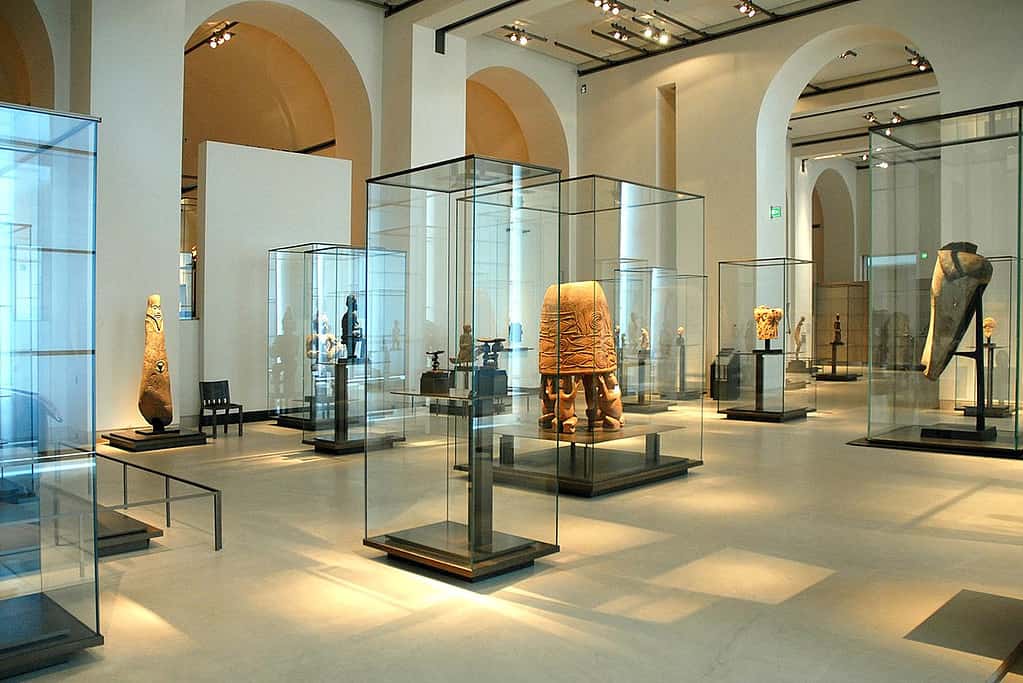
- Lumens
The number of lumens to choose in museum lighting depends on various factors, including the size of the space, the type of exhibits, and the desired lighting levels.
Different areas within a museum may have different lighting requirements. For general ambient lighting, a recommended lighting level is typically between 50-150 lux (5-15 foot candles). However, areas with specific exhibits or artworks may require higher lighting levels to highlight details or enhance visibility. For example, display cases or focal points may benefit from lighting levels of 200-500 lux (20-50 foot candles).
You must also keep in mind that higher lumens mean higher radiations and lumens should be customized according o the nature of the artifact.

- Color temperature
The color temperature of a light source indicates whether it emits a warm or cool color. It is measured in units called Kelvin (K).
Warm colors are associated with lower color temperatures, typically ranging from 2000K to 3500K. Warm lighting is often used to create a cozy and inviting ambiance.
Cool colors are associated with higher color temperatures, typically ranging from 3500K to 6500K or higher. Cool lighting is often used for focused and bright illumination.
For exhibit lighting, the choice depends on the nature and colors of the artifacts, specific aesthetic goals, and the overall theme of the museum.
For example, if the museum primarily showcases historical artifacts or traditional art, a warmer color temperature can provide a more traditional and intimate feel. On the other hand, if the museum focuses on contemporary or modern art, cooler color temperatures may enhance the visual clarity and bring out the details.
- CRI
Color rendering plays a huge role in museum lighting. The paintings and photographs showcased in exhibition spaces require lighting with CRI close to daylight. You should go with LED bulbs with CRI greater than or equal to 90 for the best display of colors.
- Beam angles
By controlling the spread of light, the focus can be directed to the intended areas, drawing attention to important details and enhancing the visual impact. Properly designed beam angles can also reduce unwanted glare or reflections on glass cases or shiny surfaces.
- Light exposure time
As mentioned before, you should choose lights with minimum UV rays. Another important factor to keep in mind while designing a lighting environment is the duration of light exposure on the artifact. This duration should be minimized.
- Style of luminaires
You can choose from a wide variety of luminaires. We have explained a few below:
- Direct luminaires: As the name suggests, such lighting fixtures direct the light in one specific direction.
- Indirect Luminaires: These fixtures are typically designed with a shielding mechanism or reflective surfaces that redirect the light output in a diffused and indirect manner.
- Diffuse luminaires: Also known as diffused lighting fixtures, these are designed to evenly distribute light in all directions
- Adjustable luminaires: These can be repositioned or adjusted to control the direction and focus of the light output. For example, adjustable spotlights, track lights, gimbal lights, swing arm lamps, and adjustable pendant lights.
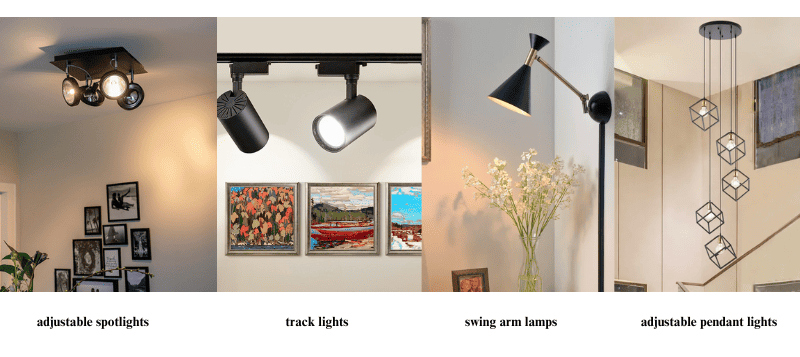
- Glare
Glare can negatively impact the viewing experience of museum visitors by causing discomfort, distraction, and even eye strain.
To achieve glare-free museum lighting, several techniques can be employed. First, it is essential to select lighting fixtures with proper shielding and optics specifically designed to minimize glare. Directional lightings, such as LED spotlights and track lighting, can be used to focus the light precisely where needed while reducing the risk of glare.
Additionally, employing adjustable lighting fixtures allow for precise aiming and positioning to minimize reflections and direct light away from visitors’ line of sight.
Finally, utilizing dimmers and controls allows for fine-tuning of lighting levels.
4. Flexible Layout
A museum’s interior arrangement and the placement of artifacts are never permanent. Museum management frequently updates their exhibits, rotates artifacts, and introduces new displays, requiring a lighting system that can adapt accordingly.
Flexibility in lighting design allows curators and designers to easily adjust and reposition lighting fixtures to illuminate the newly positioned artifacts effectively. Here are a few ways you can achieve that:
- Track lights: Install track lighting systems that allow for adjustable fixtures along the tracks. This provides the flexibility to reposition and redirects lighting as needed to accommodate changing exhibits.
- Lighting Zones: Divide the exhibition space into lighting zones, each with its own set of track lights or adjustable fixtures. This allows for independent control and customization of lighting in different areas.
- Smart lights: Using advanced lighting control systems like DALI and dimmers can allow the flexibility you need in a museum. You can adjust the light intensity, colors, and brightness levels.
- Wireless Connectivity: Consider incorporating wireless connectivity for lighting fixtures, allowing for remote control and adjustments.
- Proper Wiring and Infrastructure: Adequate power supply, wiring, and control panel capacity should be in place to handle the changing lighting requirements.
5. Lighting Audits and Maintenance
Once you’re done designing and installing the lights., it’s time to create proper protocols to maintain and audit your project.
Perform on-site lighting audits and measurements to assess the existing lighting conditions and identify any areas needing improvement. Measure light levels, color temperature, and uniformity across different areas of the museum. Use appropriate light meters, colorimeters, or lux meters for accurate measurements.
6. Standards for Rating Museum Lights
The Illuminating Engineering Society of North America (IESNA) has published various lighting standards that can be applicable to museum lighting equipment. Some of the standards that can be referenced for museum lighting include:
- IES RP-30: Lighting for Museums and Art Galleries: This recommended practice provides comprehensive guidance for lighting design in museums and art galleries. It covers lighting levels, color rendering, light distribution, glare control, UV and IR radiation control, and conservation considerations.
- IES RP-3: Recommended Practice for Lighting Museums and Art Galleries with LED Luminaires and Systems: It guides on LED light sources, lighting quality, dimming, and control systems for optimal museum lighting.
- IES RP-20: Lighting for Parking Facilities: Although primarily focused on parking facilities, this recommended practice includes information on lighting techniques to minimize vandalism and enhance security, which may apply to certain museum areas.
- IES TM-30-18: IES Method for Evaluating Light Source Color Rendition: This technical memorandum can be useful in assessing the color rendering requirements for museum lighting to represent the exhibits accurately.
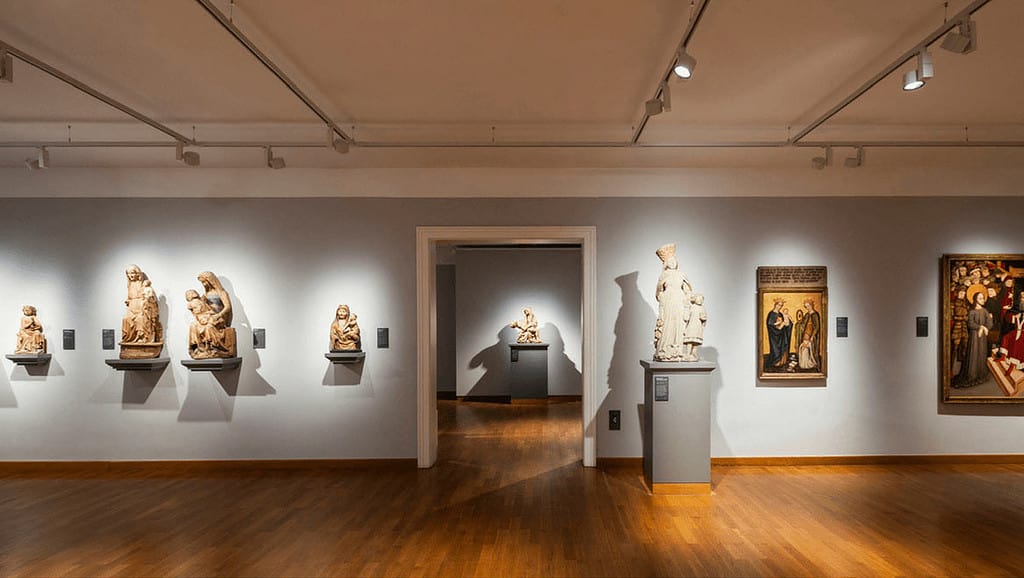
Final Thoughts
LED lighting in museum and exhibition spaces holds immense importance due to its numerous advantages over traditional lighting methods.
LED lamps offer accurate color rendering, energy efficiency, and preservation benefits, enhancing the visitor experience while reducing operational costs and minimizing damage to valuable artwork.
With the right balance of illumination, colors, CRI, brightness levels, and types of luminaires, you can create a visually stunning design that allows visitors to learn, appreciate and engage with the exhibits. Additionally, you can protect and preserve the art from getting damaged in the long run.
Discover the Perfect Solution for Your Business with RC Lighting
RC Lighting provides nothing but the best in terms of product quality and service. From floodlights to track lights and everything in between, choose from our vast catalog of high-quality fixtures.
Not only do we offer the shortest lead time in the industry, ensuring that your project stays on schedule, but we also provide fast delivery, ensuring your lights arrive promptly.
What truly sets RC Lighting apart is its commitment to customer support. Our team is available 24/7 to provide technical assistance whenever you need it. If you’re struggling to find a solution or need guidance, simply reach out to RC Lighting’s knowledgeable team, and they will help you every step of the way.
Don’t compromise on excellence—choose RC Lighting for all your museum lighting needs.


